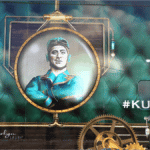
During the Great Recession, I was asked (along with a few other people) to come to the local unemployment office and provide some advice to individuals who had their jobs eliminated and were considering entrepreneurship as their next career. The conversations were exactly what you would expect. We were answering questions about how we became consultants, our biggest challenges, etc.
In fact, it was very similar to the process I followed before becoming a consultant. I had taken the time to speak with people who were consultants about how they got their start.
The reason I’m sharing this story is because a lot of the people who were trying to figure out if consulting was right career move for them were really struggling with the decision. What they really wanted was someone to answer the question: “Do I focus on trying to get a job inside a company or do I focus on starting my own company?” It’s a big decision and one everyone needs to make on their own.
I’ve always said that one of the ways you can determine the right career move is by answering these two questions:
- Think about a time when you were your most productive. What did that look like in terms of the work you were doing, the team you were a part of, how you were recognized and rewarded, your boss, etc.?
- Now do the reverse. Think about a time when you were your least productive. Remember what that time looked like in terms of your work, the team, your boss, the work environment, etc.
The answers to these two questions are often very enlightening and can point you in the right direction where your career is concerned because they answer what you like and don’t like in a job.
I recently discovered another activity that you could do to help you get focus on your next career step. The goal of this activity is to determine what drives and excites you from a work perspective. Bridge, an employee development platform, sent me a deck of Bridge Career Driver cards. You can get a set for free by completing a form on their website. The cards have six colors representing six driver categories. Step one is to select three drivers from each category.
Next, those selected cards are shuffled, and five cards are placed face up. Think of this as the initial top five drivers. Individuals choose a card from the shuffled deck and decide – Do I want to move this into my top five? And if so, what will it replace? This forces us to prioritize our top drivers and/or motivators.
Finally, once the top five drivers have been established, place a pen (or long object) above and below the cards. Move the cards up toward the top pen if your current needs in that driver area are being met. Move the cards down toward the bottom pen if they aren’t. (P.S. Don’t worry about remembering all these steps. The activity is on their website.)
Bridge recommends that this activity be conducted between a manager and employee to gain insights about what drives employees. I totally understand. But I can also see doing this privately as a career development activity. I could see doing the activity each year as part of setting professional goals. And best of all, the cards are FREE!
Figuring out our next career move is hard. There are many things to consider. Don’t let the simplicity of a card activity fool you that this activity was easy. The card activity provides a structured way to effectively guide career decision making. If you’re trying to plan your next career move, it might be worth checking out.
Image captured by Sharlyn Lauby after speaking at the SHRM Annual Conference in Las Vegas, NV
21






